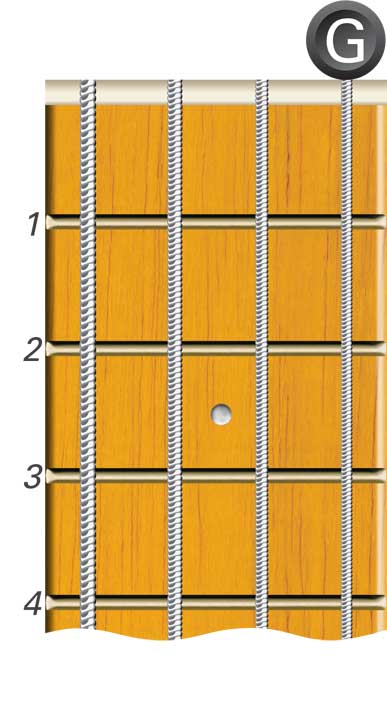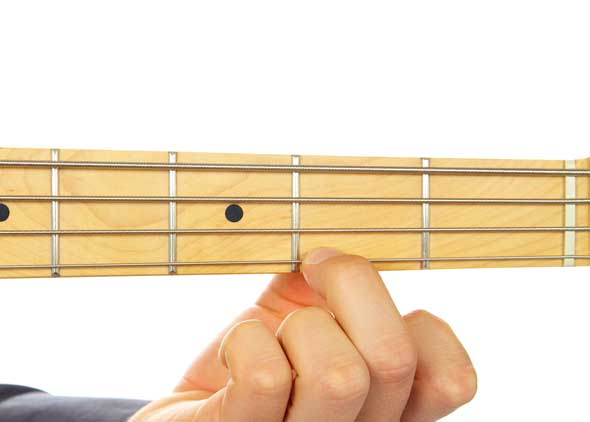
Notes on the 1st String (G String)
The G Note



The open 1st string is a G note.
The A Note



Play this A note with the second finger of your left hand just behind the second fret of the 1st string.
The first example opposite uses the open (not fretted) first string. Because the open 1st string is a G note it is called the G string. The note on the second fret of the G string is an A note. It is played with the second finger of the left hand placed just behind the second fret.
The note should sound full and round. If it buzzes or rattles you have not placed your left hand finger close enough to the fret, and you are not pressing the string down hard enough. If the note sounds "muffled" your finger is on the fret instead of just behind it.
The Quarter Note

This is a quarter note. It lasts for one beat. There are four quarter notes in one bar of * time.
The Whole Note

This is a whole note. It lasts for four beats. There is one whole note in one bar of * time.
In the count written underneath the note, the large number indicates that the note is played. The small numbers indicate that the note is held.
Chord Symbols
The letters above the staff are chord symbols. Chords are groups of notes played by the rhythm guitarist or keyboard player. Listen to the recording and you will be able to play along with the chords.
There are three types of chords used in this book. They are the most common chord types, i.e.: major, minor (m) and seventh (7) chords.
Major | Minor | Seventh | |
| e.g.: | A (A major) | Am (A minor) | A7 (A seventh) |